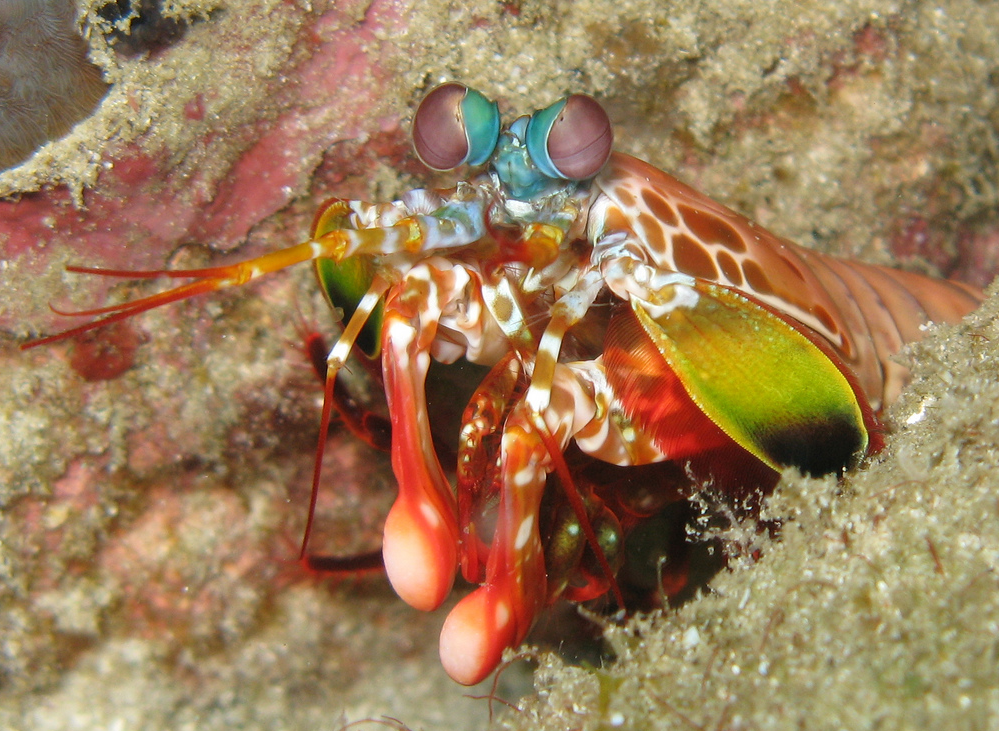Please note: The Academy will close at 3 pm on Thursday, April 18, for Big Bang Gala.
Science News
Tough Crustacean
June 12, 2012

The peacock mantis shrimp may have a delicate name, but you will never meet a tougher crustacean. Snails, abalone and sea urchins with tough shells have nothing on this stomatopod— “he literally eats them for breakfast,” says UC Riverside’s David Kisailus, one of the authors of a new study in Science.
The bright orange fist-like club of this underwater beauty accelerates underwater faster than a 22-caliber bullet. Ed Yong describes its power further in Discover:
As the club unfurls, its acceleration is 10,000 times greater than gravity. Moving through water, it reaches a top speed of 50 miles per hour.
Kisailus and his colleagues wondered what makes these clubs so strong? Essentially, how does something withstand 50,000 bullet impacts?
With microscopes and x-rays, the team found that the club is a highly complex structure, composed of three specialized regions that work together to create a structure tougher than many engineered ceramics.
The first region, located at the impacting surface of the club, contains a high concentration of the hydroxylapatite mineral, similar to that found in human bone, which supports the impact when the mantis shrimp strikes prey. Further inside, highly organized and rotated layers of chitin (a complex sugar) fibers dispersed in the mineral act as a shock absorber, absorbing energy as stress waves pass through the club. Finally, the club is encapsulated on its sides by oriented chitin fibers, which wrap around the club, keeping it intact during these high velocity impacts.
“This club is stiff, yet it’s light-weight and tough, making it incredibly impact tolerant and interestingly, shock resistant,” Kisailus says. “That’s the holy grail for materials engineers.”
Kisailus says the potential applications in structural materials are widespread because the final product could be lighter weight and more impact resistant than existing products—improving electric cars and airline fuel efficiency.
Kisailus is primarily focused on improving military body armor, which can add 30 pounds to a service member’s load. His goal is to develop a material that is one-third the weight and thickness of existing body armor.
ScienceNOW reports that:
Kisailus and colleagues are already developing materials that mimic the structure of the mantis shrimp's club, and preliminary tests show the materials are bulletproof, he says.
ScienceNOW also has a video of this tough creature pounding its prey here. You can also check out a live peacock mantis shrimp in our Water Planet exhibit here at the Academy.
Image: Prilfish/Flickr